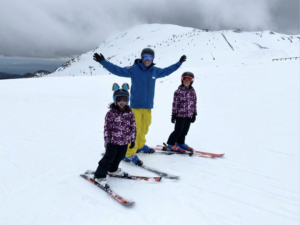
How do you like to learn? Are you a visual, auditory, reading-writing, or kinesthetic learner? You have likely been asked these questions in clinics and may have asked your students similar questions during your lessons. At times throughout my career, I have tried to determine my students’ preferred learning style and worked to tailor my teaching towards this preference.
Recently I have heard several comments that learning styles have been debunked, and that they are not supported by research. There is some truth to this. Pashler et al. (2009) found that there is no adequate evidence base to justify incorporating learning-styles assessments into general education practice. Rogowsky, Calhoun, and Tallal (2015) also found no statistically significant relationship between the preference for a particular learning style and learning.
There are several reasons for the above findings. First, what people prefer is not, per definition, what is best for them (Kirschner, 2016). Our preferences can change, and often what we prefer may not match what is most beneficial for us. Second, learning styles may pigeon-hole learners into discrete categories, when the reality is that there may be significant overlap among variables related to learning styles or preferences. Finally, even if we are aware of our students’ preferred learning style, it may be difficult or even detrimental to try to tailor the learning environment to their specific learning preference.
Does this mean that we should abandon the concept of learning styles? Not so fast. The Visual, Auditory, Reading-Writing, Kinesthetic (VARK) Model above all is designed to be a starting place for a conversation among teachers and learners about learning (Fleming, 2006). By facilitating awareness of the different ways that we can perceive and process information, learning styles may still be a useful tool in our repertoire.
In addition, teaching often reflects the teacher’s preferred teaching style rather than students’ preferred learning style (Fleming, 2006). Reflecting upon learning styles may help us be accountable to using a variety of styles that address different learning preferences, rather than defaulting to our preferred style. VARK’s strength lies in its educational value for helping people think about their learning in multiple ways and giving them options that they might not have considered (Fleming, 2006).
Personally, I have found the most success with an approach that uses a range of visual, auditory, reading-writing and kinesthetic cues. A variety of teaching strategies creates a rich environment that helps students to solidify their understanding and subsequently supports skill development. People rarely learn in only one way. Therefore, appealing to all learning styles or preferences will likely be more fun, engaging, and lead to more success for your students.
With all students, and especially with children, remember to consider how their Cognitive, Affective and Physical development may impact your teaching. For example, a three-year-old student will have less previous auditory and kinesthetic experiences, so you may simplify your language, provide plenty of demonstrations, and allow them time to process the new kinesthetic sensations they are experiencing. A teenage student will be able to process more complex explanations and auditory cues, and may also need some kinesthetic cues to help them understand why things feel different after a growth spurt.
I encourage you to get creative. Try sending a follow-up text to your students with some diagrams and notes, or getting your students to write down their feedback. Perhaps include movement and sensations to your next indoor instructor training clinic. You could even get your students to come up with their own unique cues, challenging them to address the visual, auditory, reading-writing and kinesthetic realms.
In conclusion, uncovering your students’ learning preference and tailoring your lesson to that style may not be the most effective approach. However, being aware of each learning style can still be beneficial and can help facilitate conversations with your students. Address different learning styles through your lessons, and make your delivery complete- but short. The PSIA-AASI Teaching Children Snowsport Manual (Aiken and Jordan, 2021) summarizes the concept of learning styles well: “Show ‘em, tell ‘em, and let ‘em do it!”.
By Scott Birrell
-Rocky Mountain Children’s Committee
References
Aiken, M., Jordan, K. (2021). PSIA-AASI Teaching Children Snowsports. American Snowsports Education Association, Inc.
Fleming, N. Baume, D. (2006). Learning Styles Again: VARKing up the right tree! Educational Developments, SEDA Ltd, Issue 7.4, Nov. 2006, p. 4-7.
Kirschner, P. A. (2016). Stop Propogating the Learning Styles Myth. Computers & Education (106). 166-171. Elsevier. https://doi.org/10.1016/j.compedu.2016.12.2006
Pashler, H., McDaniel, M. Rohrer, D., & Bjork, R. (2009). Learning styles: Concepts and evidence. Psychological Science in the Public Interest, 9(3), 105e119. http://dx.doi.org/10.1111/j. 1539-6053.2009.01038.x.
Rogowsky, B. A., Calhoun, B. M., & Tallal, P. (2015). Matching learning style to instructional method: Effects on comprehension. Journal of Educational Psychology, 107(1), 64e78. http://dx.doi.org/10.1037/a0037478.


